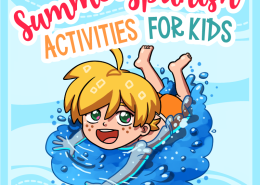 Kids' Club Spanish School, LLC
https://kidsclubspanishschool.com/wp-content/uploads/2024/07/blog_summer-spanish-activities-for-kids-3.png
807
800
Alexis Fishbaugh
https://cdnwp.kidsclubspanishschool.com/wp-content/uploads/2025/05/kids-club-spanish-school-header-logo.webp
Alexis Fishbaugh2024-07-28 22:48:532024-07-28 22:48:53Summer Spanish Activities for Kids
Kids' Club Spanish School, LLC
https://kidsclubspanishschool.com/wp-content/uploads/2024/07/blog_summer-spanish-activities-for-kids-3.png
807
800
Alexis Fishbaugh
https://cdnwp.kidsclubspanishschool.com/wp-content/uploads/2025/05/kids-club-spanish-school-header-logo.webp
Alexis Fishbaugh2024-07-28 22:48:532024-07-28 22:48:53Summer Spanish Activities for KidsSPANISH IMMERSION
5 Questions You Might Have About Learning Spanish Via The Immersion Method
So parents, you want your child to learn Spanish helping him or her be a more well-rounded individual, broaden their horizons, and of course, provide them with more opportunities for their future. Your child learned their native tongue by actually living it, and being totally immersed in the language. They heard it from their family, radio, TV, and they spoke it every day until the language almost became a part of them, a kind of extremity. That is how natural language acquisition occurs, when one is covered with the language from head to toe. So why not use the same method when learning a second language such as Spanish?
This is what the immersive language learning method was modeled after… this idea of being completely surrounded by the language. Some might think that the only way of experiencing this environment, in order to learn Spanish fluently, is to pack bags and move to Costa Rica. No need to worry, the language can be learned effectively without going to such extremities.
Let me guess; you have some questions about this, right? Well, luckily for you, we have prepared a beginner’s guide to Spanish immersion and have some answers for you. Let us dive in, shall we?
“One who speaks only one language is one person, but one who speaks two languages is two people.”
– Turkish Proverb
How do the Spanish immersion classes work?
As the name indicates, immersion in the language means showering the learner, in this case your child, with Spanish as much as possible. With standard teaching methods, the child is only interacting with the target language during the language activities and homework, but outside of that, they are doing everything in their native language.
Most traditional language classes are still taught in English, which is not ideal. Students are only learning the second language directly and could be missing out on a lot of indirect possibilities. For example, when the teacher says, “Open your books to page 23. Now circle el gato” The kids are only learning to say “el gato”, the cat. But instead, in Spanish immersion classes, the teacher would say, “Abre tu libro a la página 23 y redondea el gato” while the teacher, using their own book, opens it and turns the pages. They might write on the board the number 23 and then show the cat. These actions are called modeling, which helps the child understand what the teacher is saying.
“Most traditional language classes are still taught in English, which is not ideal.”
“You can never understand one language until you understand at least two.”– Geoffrey Willans
How will my child understand what the teacher says if they are only speaking the target language?
The short answer is with the help of TPR method, modeling and images.
What is TPR, you ask? TPR stands for Total Physical Response. This is a widely used method all around the world for enhancing language teaching and the learning experience. It works in the following way: When the teacher is speaking in Spanish throughout the class, it is normal, especially in the very beginning, for the students not to understand anything at first, and that is okay. Instead of focusing only on the listening and understanding of every individual word, we want the students to get the all-around concept of the sentence or the task and for them to understand the meaning by using movements, gestures and images. This is why we combine the language and movement to enhance language acquisition.
You can think about it as a variation of sign language. For example, when the teacher is asking the student to repeat a word after them, they might put their hand first to their mouth, then to their ear and point at the student. Every time the teacher says “repetir” and does this movement the students will indirectly learn that “repetir” means “repeat”. The teacher might say “¿Dónde está el gato?” and put their hand on their brow as if they are looking for something and then show an image of a cat. This will let the student know that the teacher is asking for them to find the cat.
Modeling is a great way to get the students to understand how they should carry out an activity without using their native language. A teacher should explain, in simple words in Spanish, the activity instructions and then do the first one themselves, so that the student can see. The teacher says “redondea el gato” and circles the cat themselves. The teacher than asks the student to “redondea el delfín” while pointing to the student and circling in the air with their finger. The student will know it is their turn to circle an animal. The teacher might hold up a picture of a dolphin and repeat “delfín” so that the student knows what animal to circle.
The combination of movements, images and modeling is a very powerful tool for learning an unfamiliar language at first. They can connect the actions to the words or sentences, which helps them to learn them easier and faster. It might take a few classes for the kids to get used to this method but no need to worry, our teachers will customize the classes for every student, and before you know it, your kids won’t even realize they hear only Spanish during their lessons!
What are the benefits of using the immersive method?
Well, for starters, as you might have realized by now, it is faster and more intense learning. Your kids will learn how to utilize the language in everyday life; in typical situations, they might face each day. After all, the goal of learning Spanish is to be able to use it confidently every day and to become accustomed to hearing the language. They will gain a massive amount of vocabulary, compared to traditional language learning methods.In addition they will learn not to “translate directly” the language. Any of us who have learned a second language know that you cannot just directly translate many things. For example, if you were to directly translate “I dreamed of a cat yesterday”, in Spanish it would be, “Yo soñe de un gato ayer”. But that is incorrect. In Spanish the correct way is “I dreamed with a cat yesterday” or “Soñe con un gato ayer”. Learning in an immersive environment teaches children that things are said differently, as they will learn words together, in real life sentences and not separately, as in a traditional setting.
What are the stages of language acquisition through linguistic immersion?
When every child is learning their native language for the first time, they go through the same steps as when learning a second language. Do you remember when your child was around 9-months-old, and you realized for the first time they understand what you are saying? You asked them to point to their nose, and they did!
The first stage of language acquisition is called the “Pre-production”. In short, the meaning of this is when the students are able to understand what is being said. At this point they already have hundreds of words stored in their brain, but do not necessarily have the knowledge to produce it yet. This is the time when they can most likely answer yes and no questions by head movement. This is when they should be encouraged to repeat everything.
The second stage is called the “Early Production”. This is the time you probably remember most fondly about your children, their first words. At this stage, their verbal output will be in the form of single words. Their word bank in their minds is expanding, and they can answer simple yes and no questions.
What happens next? The learner starts to put words together, maybe not in the right order, but that is okay. In the “Speech Emergence” stage, the students are able to form simple sentences using three or more words. They might not use the grammar correctly but are able to spot the mistakes and correct themselves most of the time, or with the help of the teacher.
Next stage? Sentences get put together. “Intermediate Fluency” stage is the breakthrough. Students are able to write and speak more complex sentences than before and are able to express their feelings and thoughts about topics. They can ask questions if they do not understand something, as well as, familiarize themselves with Spanish literature, stories, and culture at this stage.
The last and final stage is the “Advanced Fluency” stage. This is the where the students will start to sound more like native speakers. All of their hard work has paid off.
How can I help my kids to achieve all of this?
In today’s world, the easy answer is using technology, which nowadays plays an enormous part in everyone’s life. There are many ways that a child can have access to the language, from cartoons with the language changed to Spanish to different apps with games to practice.
However, we find that one of the most effective ways is trying to incorporate Spanish sentences into your family’s daily life. Finding words or sentences that your family uses every day and discovering how to say them in Spanish, and from then on only using the Spanish words or sentences. You could add a new word or sentence per week. For example, for the first week instead of saying “tie your shoes” every ime your child needs to tie their shoes, you could say “átate los cordones”. The next week add on another one like, “It is time to get up!”, which should now always be said “¡Es hora de levantarse!”Another way to learn household objects is by putting post-it notes with the Spanish vocabulary for those objects. Then, every time you mention the object, only mention the Spanish word “Who needs to load the dishwasher?” is now always “Who needs to load the lavaplatos?”Practicing with the child and making it a family goal to learn Spanish allows for some everyday conversations in Spanish, and helps “automatize” the language use, and, most importantly is much more fun than learning and memorizing in the traditional way.
Last but certainly not least, lessons with Kids’ Club Spanish School give your child exactly what they need, immersion Spanish lessons with native Spanish speaking teachers in a fun and interactive environment. The teachers us TPR, modeling and images to provide complete immersion in the language. Sign your child up for a free trial immersion Spanish class at kidsclubspanishschool.com and experience the immersion Spanish learning environment first hand!
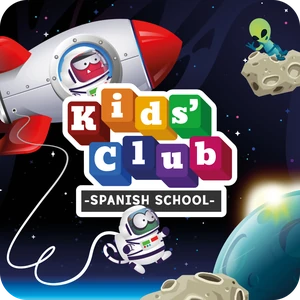
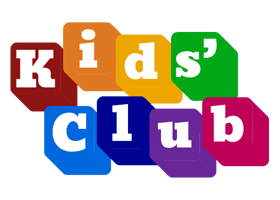
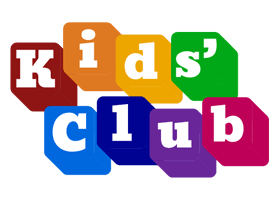
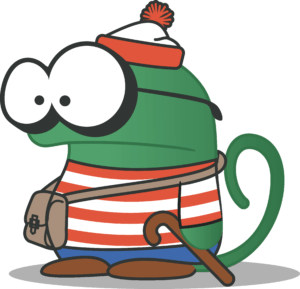

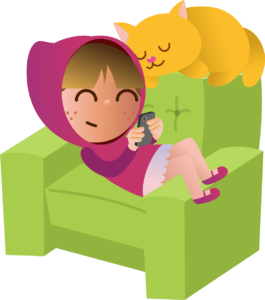
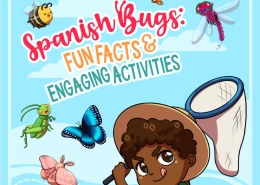 Kids' Club Spanish School, LLC
Kids' Club Spanish School, LLC Kids' Club Spanish School, SL
Kids' Club Spanish School, SL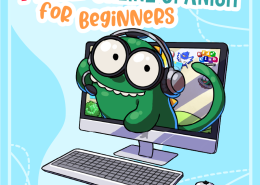 Kids' Club Spanish School, LLC
Kids' Club Spanish School, LLC

